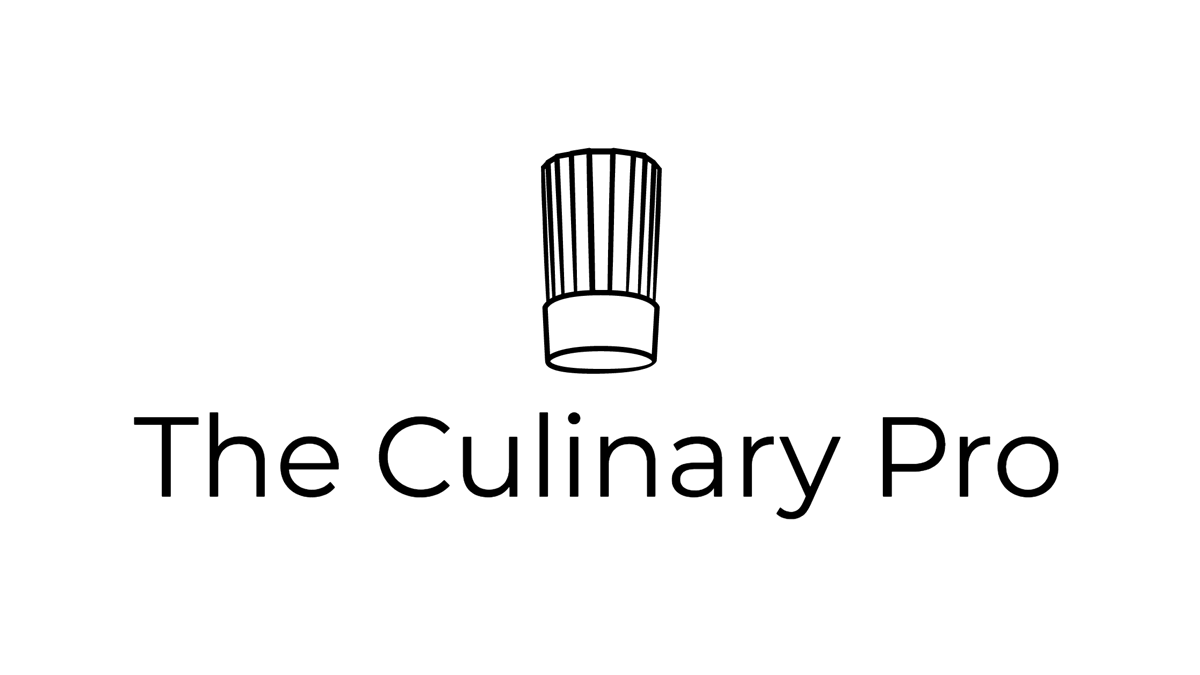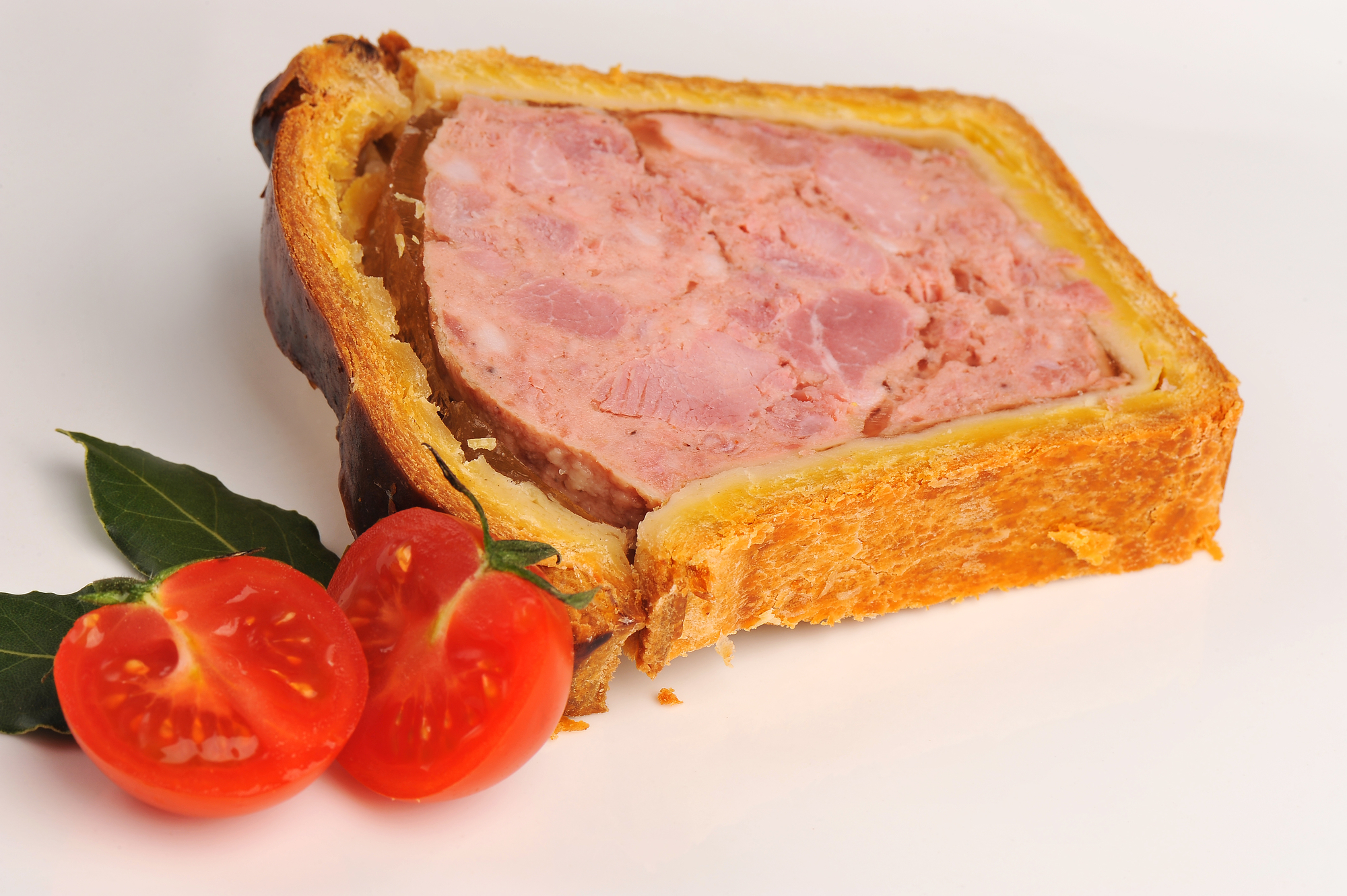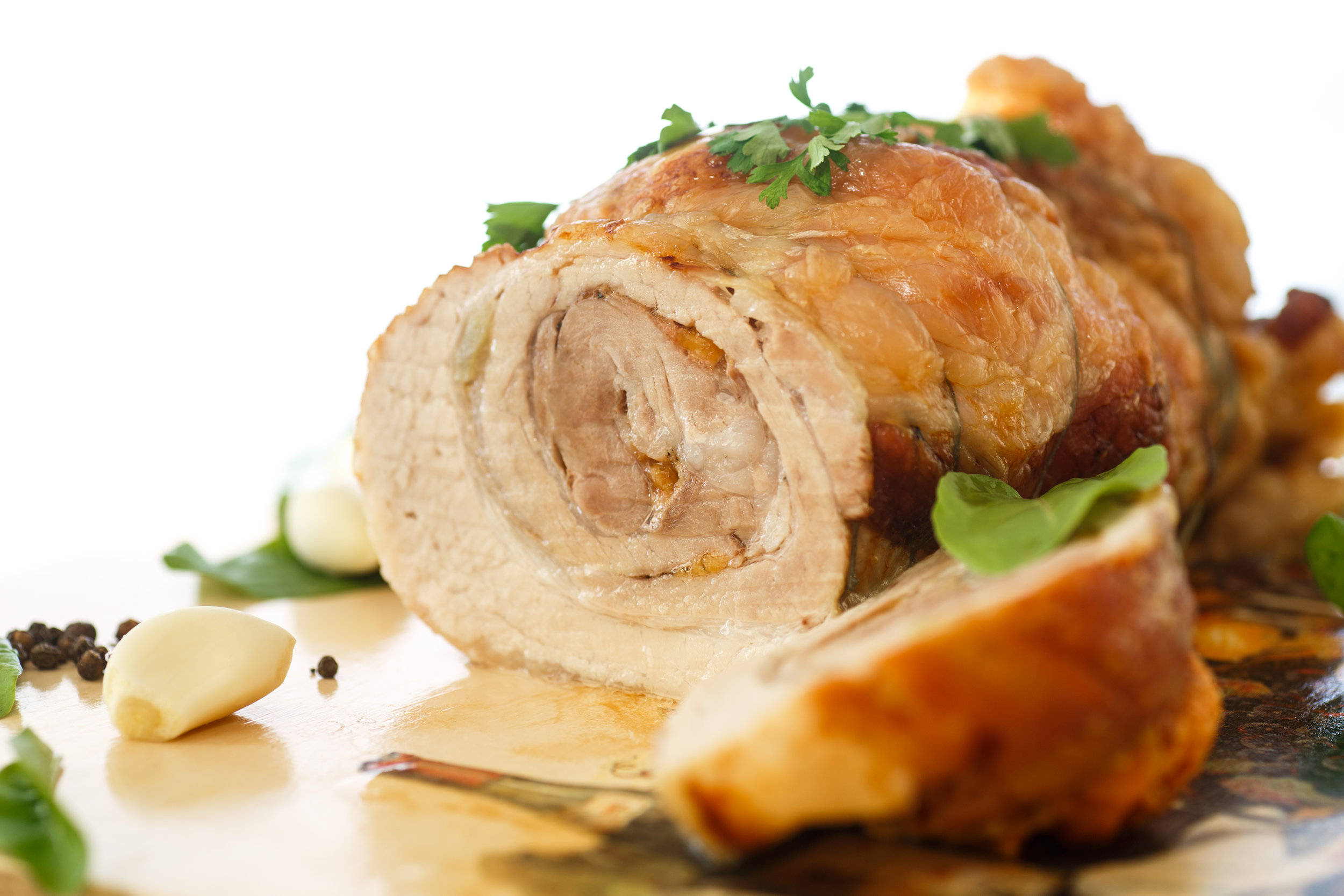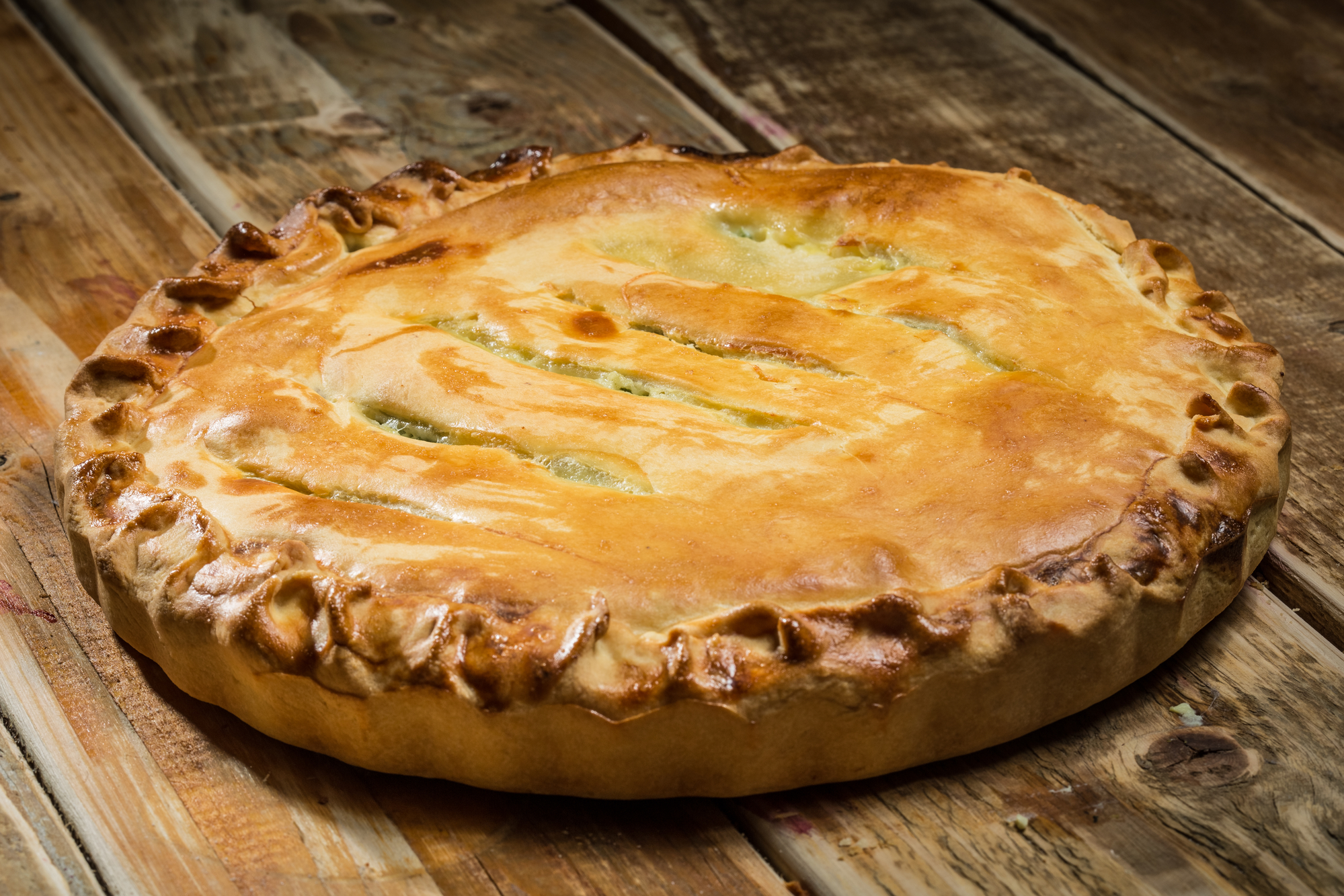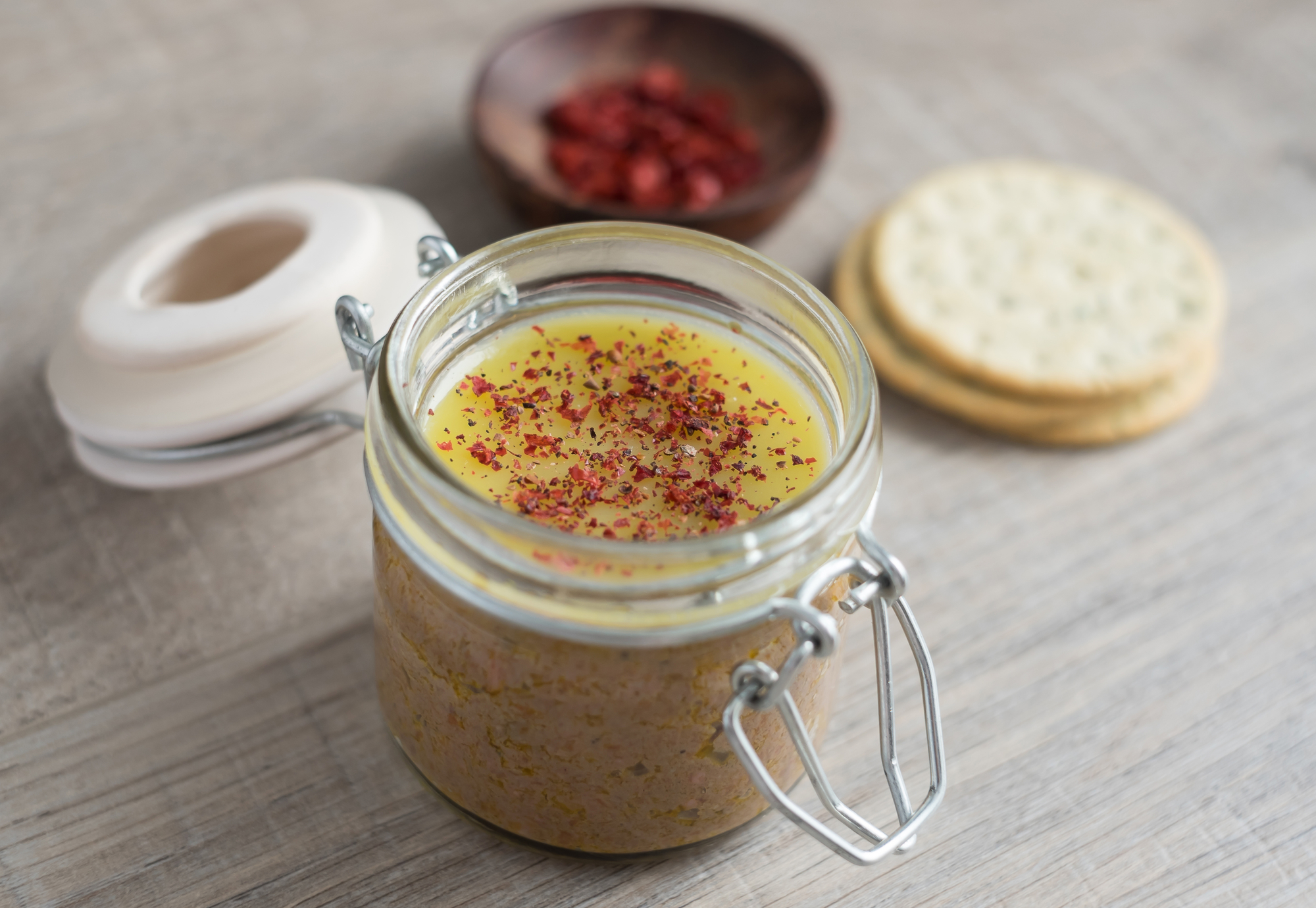Charcuterie
The art of preparing various types of meat through curing, grinding, cooking, or smoking is the foundation of charcuterie. Using forcemeat in pâtés, terrines, and various other derivatives is a hallmark of the craft. Sausages, salumi, bacon, and ham are all considered part of the charcuterie tradition. Charcuterie is derived from French traditions and terminology that has evolved and transformed.
Pâté
A forcemeat mixture of meats, fish, seafood, or vegetables baked in a pastry shell or mold. Pâté en croute refers explicitly to the pastry that encased the forcemeat. Today, pâtés are loosely defined and can be prepared in pastry crusts or wrapped in fat back, leeks, or ham.
Pâté en croute
Duck Terrine
with Pistachios & Dried Cherries
Terrine
Foie Gras Terrine
From a term for the earthenware dish that was traditionally used for the preparation of a terrine. Today, the practical terminology of terrines and pâtés is often interchangeable. Terrines can be prepared with a forcemeat, molded foie gras, or layered vegetables bound with aspic or fresh cheese.
Galantine
Galantine
Traditional preparation of a galantine required poultry to be boned completely, stuffed with forcemeat, and reshaped to its original form. Today’s interpretation of a galantine is closer to a roulade, prepared with boned poultry such as chicken or duck wrapped in their own skin. Game meats like rabbit or fish such as salmon are also prepared similarly. A galantine is wrapped in cheesecloth or plastic wrap and tied to hold its shape. It can be poached or roasted. It is usually presented cold and can be glazed with aspic to enhance the presentation.
Ballotine
Roulade of Chicken
This is a smaller relative of the galantine that traditionally utilizes the boned, leg portions of poultry. They are stuffed with forcemeat and braised or roasted. Ballotine is traditionally served hot and may be presented as a main entrée.
Roulade
Prepared like contemporary galantines, a roulade refers to a rolled item creating a pinwheel effect. A flattened chicken breast or butterflied pork loin are two examples. A roulade can be filled with just about anything and served hot or cold.
Rillettes
Traditionally a mixture of pork and pork fat cooked until they fall apart. The meat and fat are then shredded, mixed until thoroughly blended, and spooned into small crocks. The surface is sealed with a layer of aspic or fat to preserve it. Rillettes can be prepared with meat, fish, or poultry.
Salmon Rillette
Tourte
A hot pâté baked in a crust. It is round and pie-shaped and is usually served as a main course.
Tourte
Gateaux
Pains and Gateaux
Pains (bread) and gateaux (cake) are used to describe the simpler pâtés and terrines. A pain de viandes or meat bread is a pâté formed into an oblong shape, while a gateau de viandes, a meat cake, is usually round.
Parfaits
Parfait
A savory parfait is a delicate mixture of light meat, poultry, fish, or seafood cooked and pureed, bound with gelatin, and then fortified with whipped cream and egg whites. It is then molded in a terrine or individual form. Parfaits also utilize a raw mousseline forcemeat, in which case they are baked.
